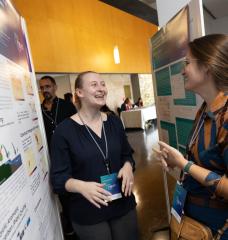
If we’re going to prevent the gravest dangers of global warming, experts agree, removing significant amounts of carbon dioxide from the atmosphere is essential. That’s why, over the past few years, projects focused on growing seaweed to suck CO2 from the air and lock it in the sea have attracted attention—and significant amounts of funding—from the US government and private companies including Amazon.
The problem: farming enough seaweed to meet climate-change goals may not be feasible after all.
A new study, published today in Nature Communications Earth & Environment, estimates that around a million square kilometers of ocean would need to be farmed in order to remove a billion tons of carbon dioxide from the atmosphere over the course of a year. It’s not easy to come by that amount of space in places where seaweed grows easily, given all the competing uses along the coastlines, like shipping and fishing.
To put that into context, between 2.5 and 13 billion tons of atmospheric carbon dioxide would need to be captured each year, in addition to dramatic reductions in greenhouse-gas emissions, to meet climate goals, according to the study’s authors.
A variety of scientific models suggest we should be removing anything from 1.3 billion tons of carbon dioxide each year to 29 billion tons by 2050 in order to prevent global warming levels from rising past 1. 5˚C. An 2017 report from the UN estimated that we’d need to remove 10 billion tons annually to stop the planet from warming past 2˚C by the same date.
“The industry is getting ahead of the science,” says Isabella Arzeno-Soltero, a postdoctoral scholar at Stanford University, who worked on the project. “Our immediate goal was to see if, given optimal conditions, we can actually achieve the scales of carbon harvests that people are talking about. And the answer is no, not really.”






